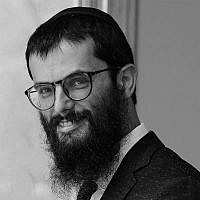The Haggadah-My Story
OMG hosting a Seder is a big job! The cleaning, and the cooking, and the set up are just an enormous amount of work. And then there are the more subtle arrangements: Making sure Uncle Irv never has to confront Aunt Sadie. It’s just a massive undertaking. Thank God as an aging Baby Boomer (quickly approaching Bust!), I’m now just a guest. But there’s one job which one can never avoid: Portraying this ancient account as my personal narrative.
In the Haggadah, as we are ending the main section, called MAGID (the retelling of the tale), the ancient authors of the Haggadah wrote: In each and every generation, every individual is obligated to see himself as if he personally left Egypt, as it is stated (Exodus 13:8); “And you shall explain to your child on that day: For the sake of this, did the Lord do [this] for me in my going out of Egypt.” Not only our ancestors did the Holy One, blessed be He, redeem, but rather also us [together] with them did He redeem.
So, that’s Job #1: Relate the story as a first person narrative! Because as we already said in AVADIM HAYINU (We were slaves): And if the Holy One, blessed be He, had not taken our ancestors from Egypt, behold we and our children and our children’s children would [all] still be enslaved to Pharaoh in Egypt.
In other words, we are the direct beneficiaries of the Exodus miracles. As a result, please, have the decency to thank God for this benefit.
I believe strongly that this Haggadah process is a direct extension of the Mitzvah of V’SHINANTAM L’VANECHA (‘you shall diligently teach your child’). This pedagogic requirement extends to spiritual experiences as well as formal education. For example, Rav Soloveitchik emphasizes that our ability to pray to God is a result of the efforts of our forebears: From generation to generation one praises Your deeds (Tehillim 145:5). The Rav maintained that we only know how to daven because we witnessed the efforts of the previous generation.
So, too, the Seder requires the older generation to inform and inspire the younger generations. I feel this responsibility very keenly because, please, God, I will have almost 30 direct descendants at this year’s Seder.
How do we fulfill this awesome responsibility? Get personal. My advice: Relate an incident in your life when you felt the relief of escape from peril. It could be a personal event; an accident or operation. But I also try to think of moments when we as a people felt this sense of ‘Wow, it’s over!’ I think of June 6, 1967, when we breathed a collective sigh of relief that the Israel Air Force had basically won the Six Day War in the first few minutes the previous day, but we only found out the next morning.
I also think of March 1, 1991; Purim, when the first Gulf War ended and we ran through the streets with the plastic sheets which had encased our secure rooms for the previous month and a half.
Push those buttons hard! Try to find just a few minutes to get personal and emotional about events in your own life when you felt HASHGACHA, Divine supervision. The goal is for your progeny to be able to declare with sincerity and feeling the famous line from the Song of the Sea: This my God and I will glorify (perhaps ‘enshrine’ or ‘emulate’) Him; the God of my PARENT, and I will exalt Him (Shmot 15:2). It’s no coincidence that this poem is recited at the end of Pesach. During the holiday, we must get our kids to buy into our religious commitment.
Begin Pesach by teaching your child; so that Pesach can end with your child acknowledging your spiritual guidance. That’s the syllabus, the lesson plan.
Now we can use this idea to understand a minor problem in the text of the Haggadah. Just before we declare the obligation of everyone to feel that we are actually experiencing the GEULAH (redemption) through the agency of the parents personalizing the account, we have the famous statement of Rabban Gamliel: Anyone who has not said these three things on Pesach has not fulfilled his obligation, and these are: the Pesach sacrifice, Matzah and Maror.
The fly in the ointment is that the recitation of the three symbols is out of order. Throughout the Seder we’ve been following the advice of Chazal: Begin with the GENUT (negative) and finish with the SHEVACH (positive, perhaps ‘praiseworthy’, Pesachim, Chapter 10, Mishna 4). But Rabban Gamliel reverses the order and ends with the negative or ‘the downer’. What’s going on?
Here’s my take: During the recitation of the story, we follow the rule of ‘begin low; end high’. Now that we have finished the story-related section of the Seder, we’ve entered a new phase of the Seder experience: It’s time to internalize the story.
When we look at the redemption from Egypt story, we begin with the horrible bondage (GENUT) and end with the glorious redemption (SHEVACH), but now we’re telling our story which is a pre-redemption tale. We’re still waiting for the GEULA SHLEIMA, complete and final redemption. The MAROR must come last; we still have bitterness in our lives and, therefore, on our palate.
Until the advent of the Mashiach (speedily in our days, please), we continue to experience the pains of this world. We really feel it this year. We are living through, probably, the worst period since the Holocaust. We’ve got that Maror on our palate. But it will be sweet when that GEULA arrives. Please, please, soon! CHAG SAMEACH!



